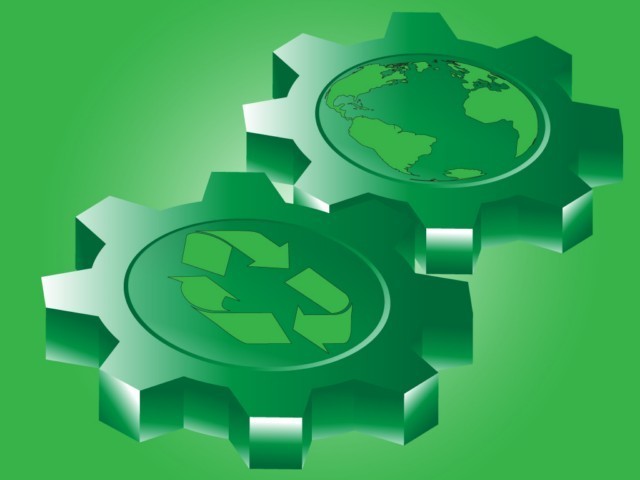E3 Green Suppliers Network—How It’s Working
 |
In 2006, Sermatech, in Connecticut, a provider of high-performance coatings to the aerospace industry, decided to partner with the GSN to address both lean and green manufacturing. An assessment was performed on the company’s surface coating process line that sprayed helicopter hubs, and it found that because the parts were traveling a considerable distance during the process, parts were at higher risk for damage. The resulting need for rework was costing the company about $46,000 annually, or about 2% of its profit margin. In addition to the monetary costs, the assessment identified a number of wastes resulting, including coating overspray, air emissions, spray booth filters, solvent, masking tape, and protective gloves.
To address the problems, the assessment team recommended the company install an enclosed environmental workstation or spray booth that served to both eliminate the travel and exposure time for parts and optimize available workspace. The changes were anticipated to reduce necessary rework by 75 percent. But that’s just one aspect.
Forget expensive calls to lawyers and consultants. With Enviro.BLR.com, you get instant access, 24/7. Try it out today and get the 2015 EHS Salary Guide, absolutely free. Download Now.
In addition to the rework reductions, the company also estimated it would reduce hazardous wastes and emissions, including:
- Hexavalent chromium and aluminum from coating and acetone solvents reduced by more than 30%, which is equal to 2,000 pounds (lb);
- Volatile organic compounds emissions reduced by 66%, or more than 32 lb per year per booth; and
- More than $600 in savings related to disposal costs, and realize total annual savings of about $35,000.
Another positive to come from the GSN experience was realized when one of the company’s major customers learned of its efforts to reduce environmental risk and signed a preferred supplier agreement with the company.
Down south, another manufacturing company, Southwire, responded to a 2007 call from the governor of Georgia for businesses to reduce their water use by 10% to help mitigate a drought. At the same time, the company launched a companywide sustainability campaign, including goals to reduce water use by 15% and its overall carbon footprint by 10%.
The company, which manufacturers wire and cable for residential, commercial, industrial, and utility uses, underwent a GSN team assessment in 2008 at its Carrollton Utility Products Plant that focused on its 600-volt cable line. The line was chosen because “most manufacturing processes situated at the facility take part in producing the 600-volt cable,” and improvements to that line can be used on other similar lines at the facility.
Everything You Need for Environmental Compliance
Enviro.BLR.com puts everything you need at your fingertips, including practical RCRA, CAA, CWA, hazardous waste regulatory analysis and activity, news, and compliance tools. Try it at no cost or risk and get a FREE report.
Based on the assessment’s findings, the company implemented a water-looping and filtration system that allowed process water recycling without sacrificing product quality. The resulting savings in water use totaled more than 9 million gallons (gal) and $70,000 annually, a reduction that subsequently reduced the facility’s demand on the state’s water resources by more than 90%.
Following the GSN assessment, the company also reduced scrap from its processes by about 30% through better planning and order management. The company “now tracks scrap rates by the hour, focuses on the details when filling orders, and proactively makes adjustments to production to optimize efficiency and reduce scrap wastes,” which is in line with its goal to achieve zero-landfill status by 2017.
Nationwide, the GSN, as a part of the E3 Framework, has helped to achieve some pretty impressive reductions in energy use, waste, and emissions. Among these reductions are:
- More than 95 million tons of air emissions,
- More than 543 million lb of solid waste,
- Almost 242 million lb of water pollution and 264 million gal of water, and
- More than 820,000 lb of hazardous waste.
From the economic side, the program has achieved:
- Almost $22 million in onetime cost savings;
- More than $40 million in environmental savings;
- More than $108 million in lean savings;
- Almost $41 million in energy cost savings; and
- Since 2009, 1,073 jobs created and 2,423 jobs retained.
More about the E3 GSN can be found at http://www.e3.gov/about/gsn.html.
